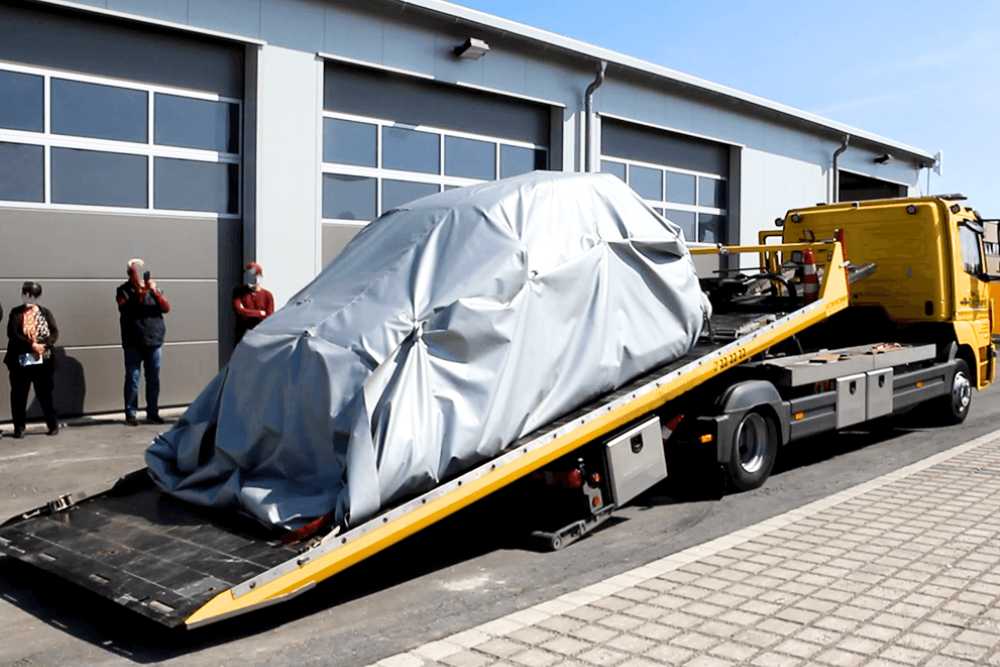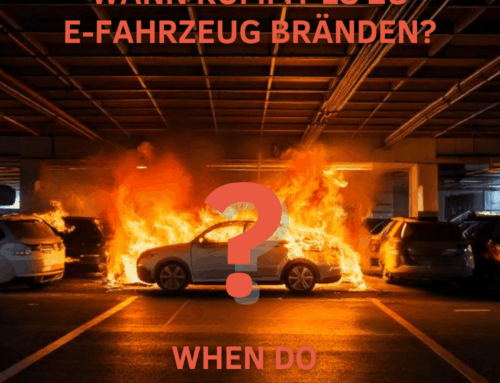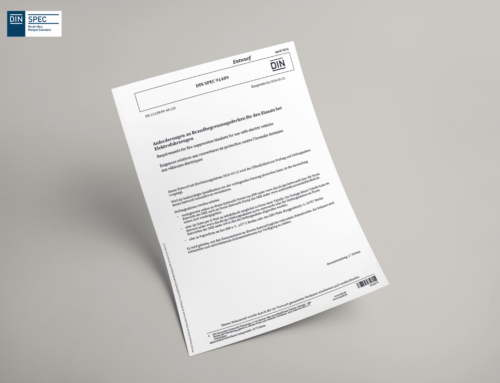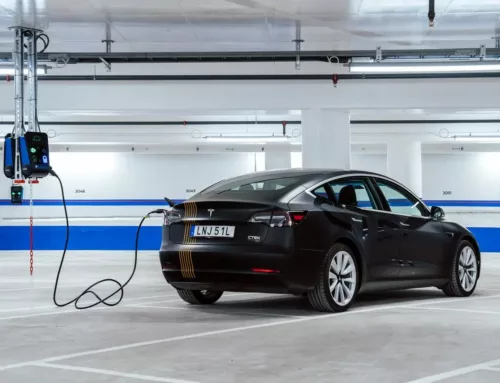
Electric vehicles have become an integral part of our streetscape. However, they pose particular risks in the event of accidents that conventional safety precautions cannot cover. In this article, we explain the requirements that apply to e-vehicles involved in accidents and how these can be minimized with the help of innovative solutions such as the VLITEX fire blanket can be implemented.
Table of contents
Why e-vehicles involved in accidents need special guidelines
Electric vehicles differ from conventional vehicles in key respects. The high-voltage batteries and complex electrical systems in particular place new demands on safety and handling. The most important dangers:
- Fire risks: Lithium-ion batteries can ignite if damaged. It becomes particularly critical if liquids penetrate the battery cells.
- Electrical hazards: High-voltage systems pose a considerable risk of electric shock, especially if handled improperly.
- Environmental risks: Leaking battery solutions can contaminate soil and water.
These hazards require specific guidelines and measures to ensure the safety of people, vehicles and the surrounding area.
Guidelines for safe handling
1. securing the scene of the accident:
After an accident, the accident site must be clearly marked and cordoned off. Electrical hazards should be identified by warning signs. This not only protects bystanders, but also makes the work of the emergency services easier.
2. trained personnel:
Only specially trained personnel may be entrusted with the recovery and handling of e-vehicles involved in accidents. Regular further training is crucial to minimize risks and to know the current safety standards.
3. transport of vehicles involved in accidents:
Transport must be carried out in such a way that potential fire hazards are minimized. The VLITEX Car Service Set offers a practical solution: silicone-coated fiberglass blankets can be used to safely wrap the vehicle so that flames and smoke cannot escape.
4. storage in quarantine areas:
The German Association of the Automotive Industry (VDA ) recommends that vehicles are parked in quarantine areas at a minimum distance of 5 meters from other objects. With the VLITEX fire blanket, this distance can be reduced to just 1.5 meters, saving valuable space. The cover also protects against the ingress of rainwater, which could damage the battery.
5. temperature monitoring:
Monitoring the battery is a central component of the specifications. With the VLITEX Temperature Tracker operators can monitor the temperature seamlessly. The system sends warnings in the event of conspicuous temperature increases so that a quick response can be made. The seamless temperature monitoring and recording in the portal also provides proof for the insurance company.
6 Disposal of damaged batteries:
Damaged batteries must be processed by certified disposal companies. Leaking liquids should be removed professionally to avoid environmental damage.
Economic aspects of the specifications
Compliance with the regulations incurs costs, but VLITEX products offer economically viable alternatives. fire blankets are not only cheaper to purchase than extinguishing containers, but can also be passed on to the vehicle owner's insurance company. This creates a win-win situation for everyone involved. You can find more details on the VLITEX product page.
Conclusion
E-vehicles involved in accidents require special safety precautions that are regulated by clear specifications. With the solutions from VLITEX - such as the Car Service Set and the fire blanket - these requirements can not only be met, but also efficiently implemented in practice. Greater safety, space savings and economic benefits are just some of the reasons to opt for these products.
Find out more at vlitex.com.










